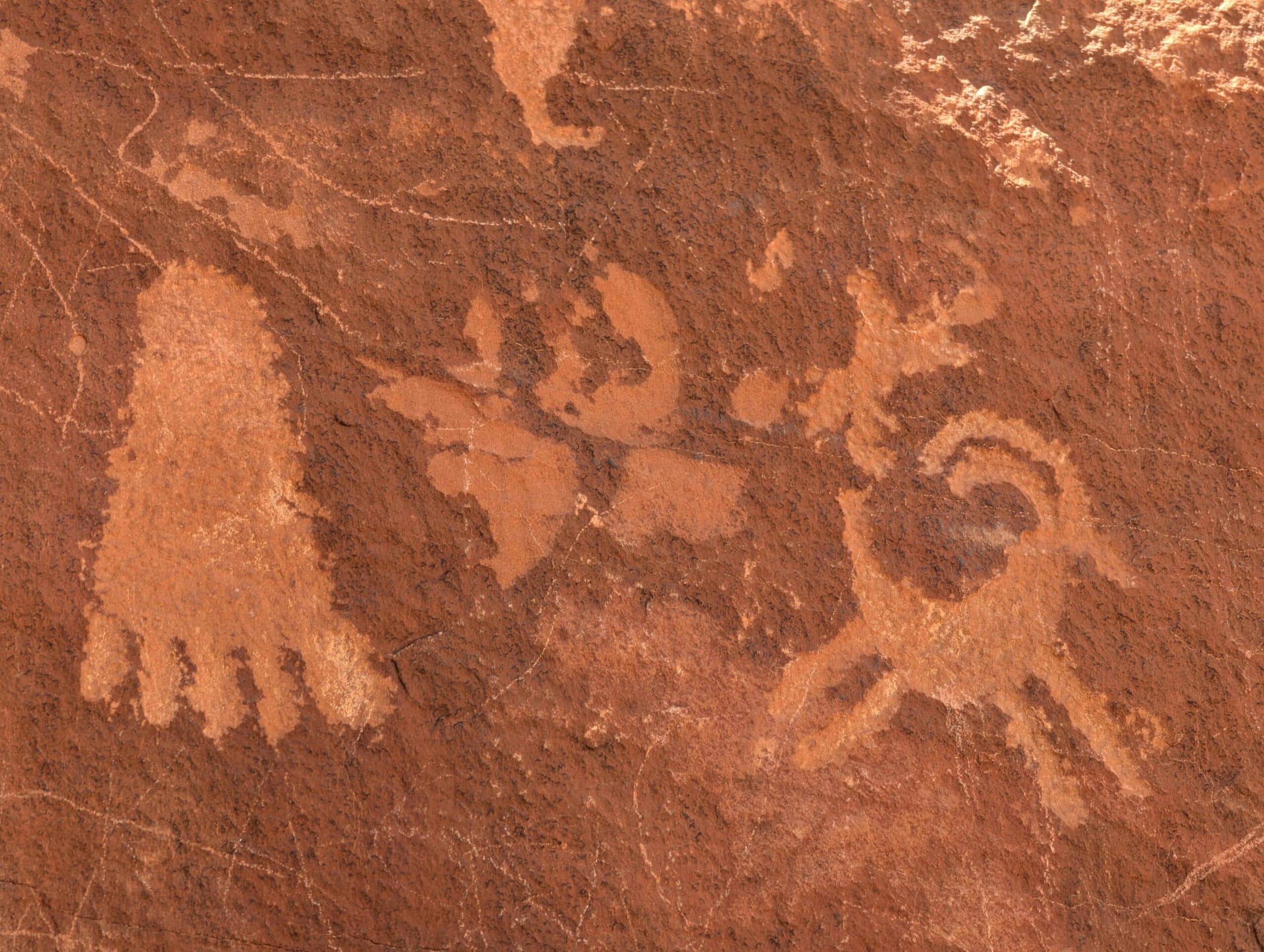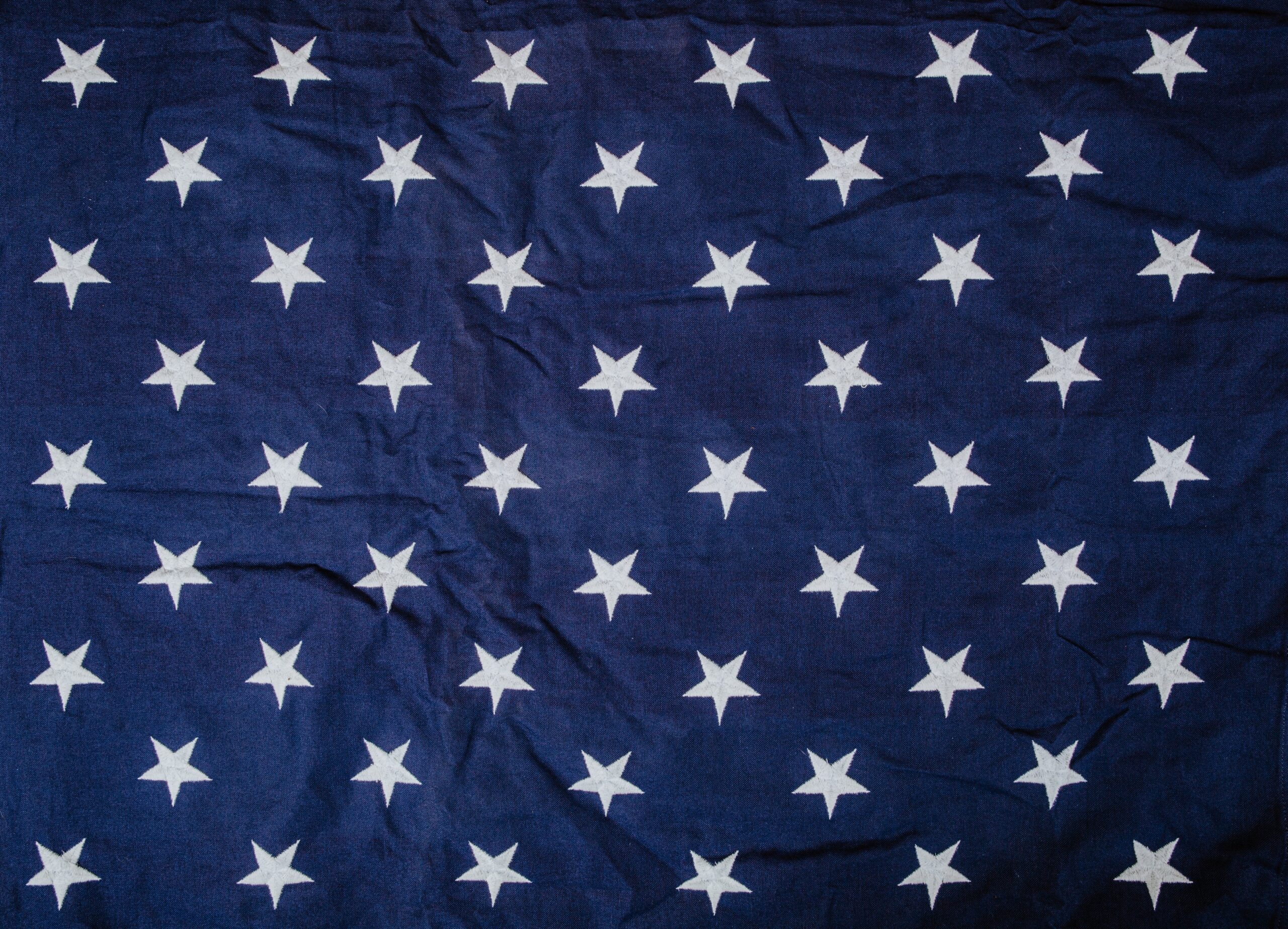


Central Question: Why did the Missouri Compromise fail to end the national debate over slavery?
In the years leading up to the Missouri Compromise in 1820, tensions grew increasingly intense between proslavery and antislavery factions within the U.S. Congress and across the country. They reached a boiling point in 1819, after Missouri’s request for admission to the Union as a slave state, which threatened to upset the delicate balance between slave states and free states. To keep the peace, Congress reached a two-part compromise, not only granting Missouri’s request but also admitting Maine as a free state. It also passed a law that drew an imaginary line across the former Louisiana Territory, establishing a boundary between free and slave states. Although the issue was temporarily settled, the Compromise pleased few Americans of either camp and left a clear division between free and slave states.
For more background, read “The Failure of Compromise” on the Gilder Lehrman Institute of American History website (free login required) and “Missouri Compromise: A Win-Win for Clay” on NPR.
Scholars understand and can fluently use the following Unit 7 Key Terms:
Scholars understand the Missouri Compromise and can explain why the Missouri Compromise failed to end sectional tensions in the United States over slavery.
Preparation
Launch (2 minutes)
Listen (5 minutes)
Discuss (3 minutes)
Watch (2 minutes)
Discuss (3 minutes)
Homework
Central Question: To what extent did President Andrew Jackson promote democratic values?
As the status quo was preserved on the issue of American slavery, a new politician rose to national prominence on the promise to restore American democracy: the famed war hero of 1812, Andrew Jackson. Of all presidential reputations, Jackson’s is perhaps the most difficult to explain. Jackson is the only president whose name graces a whole period in history — the interval between the War of 1812 and the coming of the Civil War is often known as the Jacksonian Era, or Age of Jackson. Yet the reason for Jackson’s claim on an era is not readily apparent. His sole major legislative victory in eight years was an 1830 law to “remove” Indian tribes, something seen today as travesty rather than triumph. That measure aside, the salient features of Jackson’s relations with Congress were his famous vetoes: killing a string of road and canal subsidies, and the Second Bank of the United States. Rather, Jackson’s prominence, and source of continuing controversy, lies in something much less concrete: his place as an emblem of American democracy. The image of Jackson as a quintessential product of American democracy has stuck, yet always complicating, it has been the interplay between the personal and the political. If Jackson is a potent democratic symbol, he is also a conflicted and polarizing one. To an amazing degree, historians today still feel visceral personal reactions to him, and praise or damn accordingly.
For more background, read “Andrew Jackson and the Constitution” and “Andrew Jackson’s Shifting Legacy” on the Gilder Lehrman Institute of American History website (free login required).
Scholars understand and can fluently use the following Unit 7 Key Terms:
Scholars can apply their knowledge of United States history to interpret original sources and use these sources to write clear, concise, and compelling claims about the democratic nature of Andrew Jackson’s presidency.
Give scholars 2 minutes to revise their main ideas or claims based on the discussion.
Central Question: To what extent did President Andrew Jackson promote democratic values?
Scholars can plan and draft clear and compelling written arguments that answer a historical question with strong theses and evidence that supports or proves their theses.
Outline (15 minutes)
Draft (15 minutes)
Teacher Feedback Guidance
Central Question: To what extent did President Andrew Jackson promote democratic values?
Scholars revise their essays based on individualized teacher feedback to make their essays stronger and clearer and understand how to use their feedback to grow as writers.
Preparation
Homework
Teacher Feedback Guidance
Central Question: How did Native Americans respond to federal Indian removal policies?
Jackson’s reputation as a champion of the “common man” is debatable, but his legacy as the instigator of forced Indian removal policies is not. Begun under Jackson, the federal government in the 19th century forcibly removed native nations from their ancestral homelands in the eastern United States to lands west of the Mississippi River. The policy traced its direct origins to the administration of James Monroe, and it reflected conflicts between European Americans and Native Americans that had been occurring since the 17th century, which escalated as white settlers increasingly pushed westward. But the Indian Removal Act, signed by President Jackson in 1830, accelerated removal efforts with the full force of the United States Army. Despite varied forms of resistance, including legal challenges endorsed by the Supreme Court and armed defense of native territory, the act endured. The most infamous event of Indian removal was the Trail of Tears, when, in 1837, thousands of Cherokees were forced off their lands in Georgia and marched to Indian Territory after a small group of Cherokee signed a federal treaty; many died along the treacherous journey.
For more background, read “The Indian Removal Act” on the Gilder Lehrman Institute of American History website (free login required) and “American Expansion Turns to Official Indian Removal” on the National Park Service website.
Scholars understand and can fluently use the following Unit 7 Key Terms:
Scholars understand the policies toward Native Americans pursued by presidential administrations through the Jacksonian era and can explain the various strategies of Native Americans to resist and ultimately survive removal.
Launch (2 minutes)
Watch (3 minutes)
Discuss (5 minutes)
Homework
Central Question: How did the cotton economy change American slavery in the 19th century?
Indian removal policies opened up vast swaths of land in the Southern United States for white settlement, and Southern landowners quickly made use of the land for an increasingly valuable new cash crop: cotton. By the 1790s, the textile industry in Britain and New England was exploding, increasing demand for cotton. Eli Whitney’s cotton gin, which easily separated cotton fiber from its seeds, made a once labor- intensive process dramatically less so. Many Americans benefited from the rise of a new cotton economy: Southern planters, Northern bankers and shippers, and the textile industry. Cotton transformed the United States, making land in the Lower South extraordinarily profitable. Growing more cotton also meant an increased demand for slaves, who, after the ban on the international slave trade, became increasingly valuable. Slaves in the Upper South were bred and sold “down river” to cotton plantations in droves. This created a Second Middle Passage, the second largest forced migration in America’s history. To feed “King Cotton,” this massive domestic slave trade supplied slaves to states and territories. And in order to control the rapidly growing slave population and increase production — and profits — slavers became increasingly restrictive and violent.
For more background, read and watch the content on “Many Rivers to Cross: The Cotton Economy and Slavery” on the PBS website.
Scholars understand and can fluently use the following Unit 7 Key Term:
Scholars understand the origins of the Southern cotton economy and can explain how the cotton economy changed the demand for slave labor and the geography, movement, and experience of enslaved people in the 19th century.
Launch (2 minutes)
Watch (4 minutes)
Discuss (4 minutes)
Homework
Central Question: How did enslaved African Americans resist slavery throughout the 19th century?
Historical Background
Despite the rapid expansion of slavery and efforts of slaveholders to crush the spirits of the growing numbers of enslaved African Americans, the enslaved found countless ways to resist. For most, resistance took the form of quiet or passive acts of rebellion. Some resistance was expressed through art and culture. Enslaved people created their own “invisible churches” that brought together African roots and African needs. Black worshippers sang spirituals that inspired hope, fostered spiritual resistance to slavery, and at times communicated secret messages about escape. Quiet resistance sometimes flared into open rebellion. When pushed too hard, enslaved people refused to work, rejected orders, or struck back violently. Denmark Vesey and Nat Turner attempted two of the largest slave rebellions of the era. Vesey was caught before he could take action, but Turner and his men successfully killed at least 57 people before he was captured. Vesey’s and Turner’s rebellions panicked white Southerners, prompting Southern states to pass even stricter slave codes by the mid-19th century.
For more background, read “Nat Turner’s Slave Uprising Left Complex Legacy” on the National Geographic website, and browse the “Slave Resistance Digital Exhibition” on the Gilder Lehrman Institute of American History website (free login required).
Scholars understand and can fluently use the following Unit 7 Key Terms:
Scholars understand the horrific conditions experienced by enslaved African Americans and can explain how African Americans used violent and nonviolent methods to resist these conditions.
Launch (2 minutes)
Watch (4 minutes)
Discuss (4 minutes)
Homework
Central Question: How did social movements during the First Age of Reform hope to change 19th- century society?
As slavery became increasingly entrenched in the American South, and Southern society grew more and more restrictive over enslaved people, a religious revival — the Second Great Awakening — brought religion to more Americans than ever before. The movement encouraged a renewed sense of moral duty to improve society. As the United States began industrializing and wealth increased, poverty and crime increased as well. Many of the reform movements inspired by the Second Great Awakening, such as temperance and education reform, hoped to tackle the root of these problems in society. Others, such as the abolition movement, had existed long prior but benefited from a renewed fervor to rid the nation of moral decay, including the “peculiar institution” of American slavery. Issues of morality were seen as the natural realm of women, making these movements a natural stepping stone into public life. Although many of these movements had a long battle ahead and did not see immediate success, they changed the way Americans saw their role as moral agents in their society.
For more background, read “Education Reform” and “Transcendentalism and Social Reform” on the Gilder Lehrman Institute of American History website (free login required).
Scholars understand and can fluently use the following Unit 7 Key Terms:
Scholars understand the importance of the Second Great Awakening and First Age of Reform and can explain the philosophies and goals of antebellum education, temperance, prison, and abolition movements.
Preparation
Launch (2 minutes)
Read (5 minutes)
Discuss (3 minutes)
Homework
Central Question: Why did American women begin fighting for their rights in the mid-19th century?
In the early decades following the American Revolution, early social reformers argued that women were equal in intellect and abilities to men. Even so, the values and traditions of the period constrained the role of women outside the home. But by the 1830s, pockets of antebellum reformers, influenced by late 18th- century ideals of republican womanhood and egalitarian Christian values espoused by the preachers of the Second Great Awakening, argued for a woman’s right to speak out on moral and political issues.
Women began to gain traction as leaders within larger reform movements in this First Age of Reform. Facing discrimination even within “progressive” social movements, especially for abolition, women reformers launched the Seneca Falls Convention in 1848 and ignited a distinct women’s rights movement.
For more background, read “19th Century Feminist Writings” on the Gilder Lehrman Institute of American History website (free login required).
Scholars understand and can fluently use the following Unit 7 Key Terms:
Scholars understand the significance of the 1848 Seneca Falls “Declaration of Sentiments” and can explain the motivations and activities of women from different racial and social groups in the early women’s rights movement.
Preparation
Launch (2 minutes)
Read (5 minutes)
Discuss (5 minutes)
Homework
Central Question: Why did the American nativist movement rise in the mid-19th century?
Although many movements in the 19th century attempted to improve American society through egalitarian social reforms, the nativist movement was decidedly antidemocratic. Irish immigrants, who began arriving in the United States in significant numbers in the 1840s as a result of the Great Famine, faced especially harsh discrimination because of their Catholicism in a Protestant United States, newly evangelized by the Second Great Awakening. This discrimination was not subtle or hidden; newspaper classified advertisements blatantly blared “No Irish Need Apply.” Nativist movements grew especially powerful in Northern cities, where increasing numbers of Irish immigrants arrived. Within a few years, nativists coalesced around the anti-Catholic, anti-immigrant American Party, whose members were called the “Know-Nothings” because they claimed to “know nothing” when questioned about their politics. Party members vowed to elect only native-born citizens — but only if they weren’t Roman Catholic. Buoyed by the war cry “Americans must rule America!,” the Know-Nothings elected eight governors, more than 100 congressmen, and mayors of cities that included Boston, Philadelphia, and Chicago in the mid-1850s.
For more background, read “When America Despised the Irish: The 19th Century’s Refugee Crisis” on the History Channel website.
Scholars understand and can fluently use the following Unit 7 Key Terms:
Scholars understand the factors that drove immigration in the 19th century, especially from Germany and Ireland, and can explain the hostility these immigrants faced from American nativists.
Launch (2 minutes)
Examine (5 minutes)
Discuss (3 minutes)
Central Question: How did 19th-century reform movements and their leaders influence American society?
The First Age of Reform fundamentally redefined American society in myriad ways, even if the aims of mid-19th-century reformers went unfulfilled for decades — or even beyond the lifetime of the movement’s leaders. From sparking the national cry for abolition that would ultimately lead to a bloody civil war, to transforming social institutions such as public prisons and schools, to upending the prevailing gender norms of the day and reimagining an equal society for women, these movements and their leaders attempted to strengthen American society and democracy. The short- and long-term impacts of other movements, such as temperance and the first wave of nativism, had less egalitarian aims, and the consequences of these movements were nonetheless significant over time. The legacy of antebellum reform movements and their leaders are complex and worthy of deeper analysis.
For more background, review relevant resources provided in earlier lessons throughout this unit.
Scholars conduct and organize research to assess the impact of movements for education, abolition, prison reform, temperance, or women’s suffrage or one of these movements’ principal leaders on American society.
Preparation
Launch (2 minutes)
Teacher Model (3 minutes)
Investigate (15 minutes)
Planning (10 minutes)
Teacher Feedback Guidance
Central Question: How did 19th-century reform movements and their leaders influence American society?
Scholars create and revise their projects and prepare to display them to the class.
Preparation
Scholars who have completed all of their regular homework assignments may choose to complete an assignment for extra credit.
Prompts: Scholars may choose one of the following prompts about Big Ideas in American history.
Project Menu: Scholars may then choose to respond to the prompt chosen above with one of the formats outlined below.
resources
Access a wide array of articles, webinars, and more, designed to help you help children reach their potential.

ES PBL Grade 2: Brooklyn Bridge
Educator
Curriculum
Elementary School
2nd
PBL

ES PBL Grade 3: Iroquois and Lenape
Educator
Curriculum
Elementary School
3rd
PBL

Grade 1: PBL School – How It Works!
Educator
Curriculum
Elementary School
1st
PBL

Grade 4: PBL A Nation is Born
Educator
Curriculum
Elementary School
4th
PBL
NEWSLETTER
"*" indicates required fields
